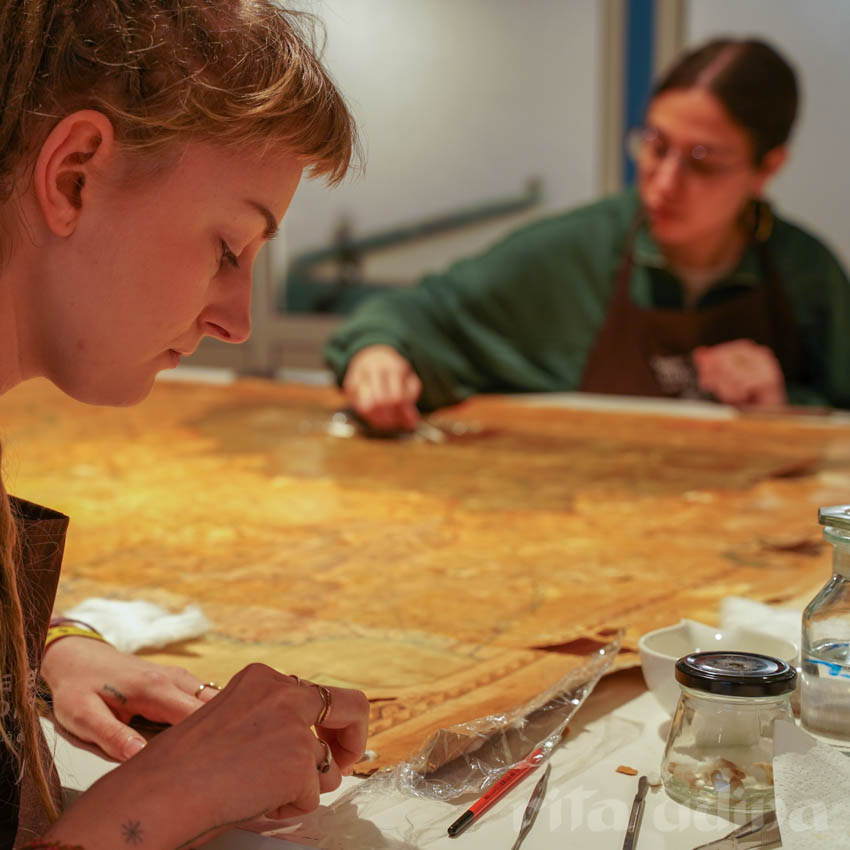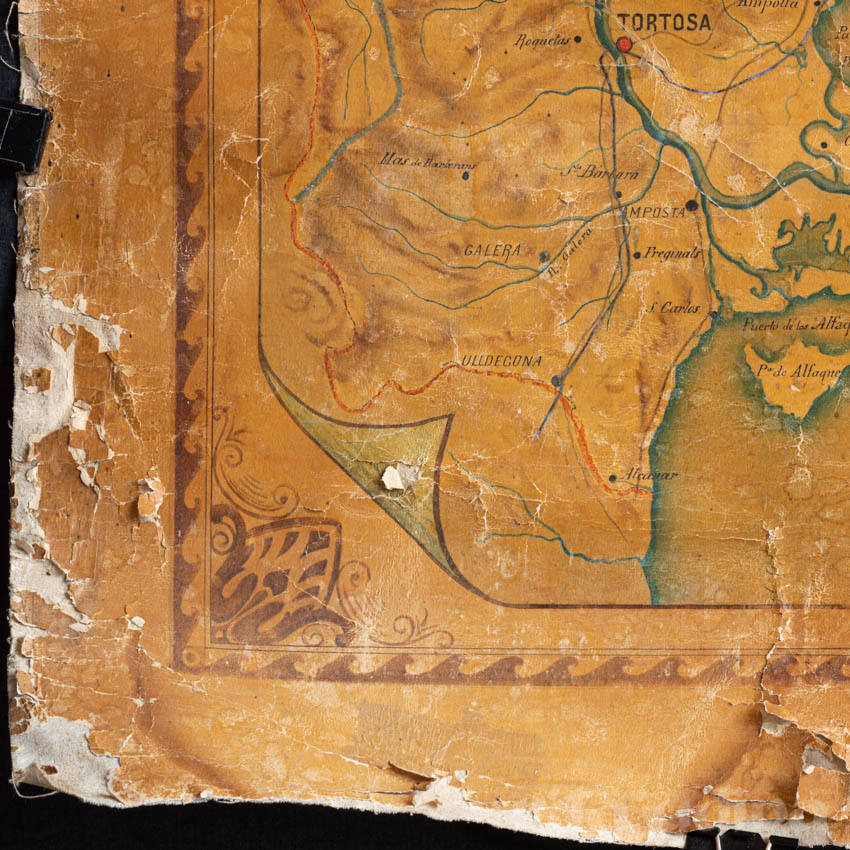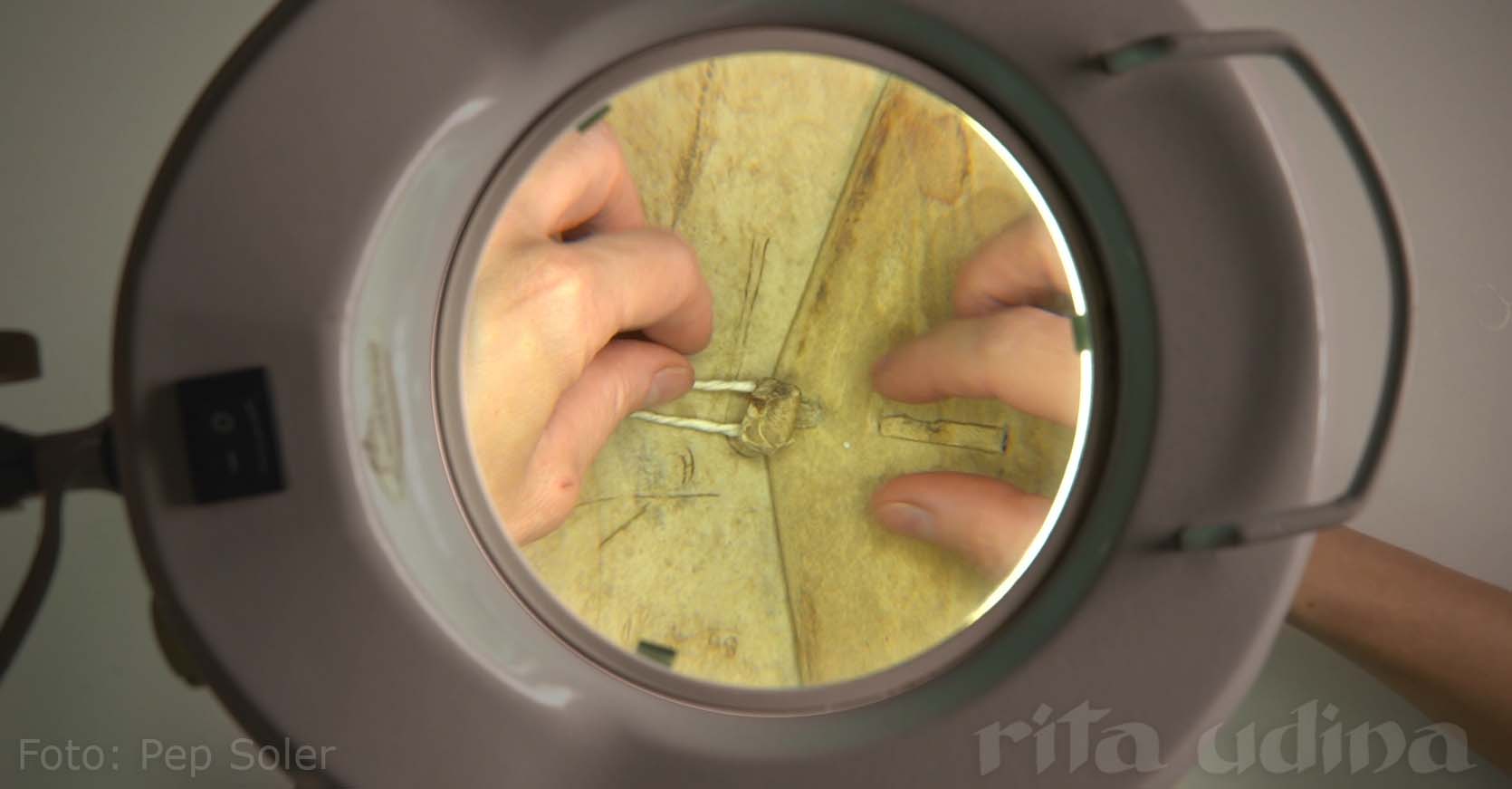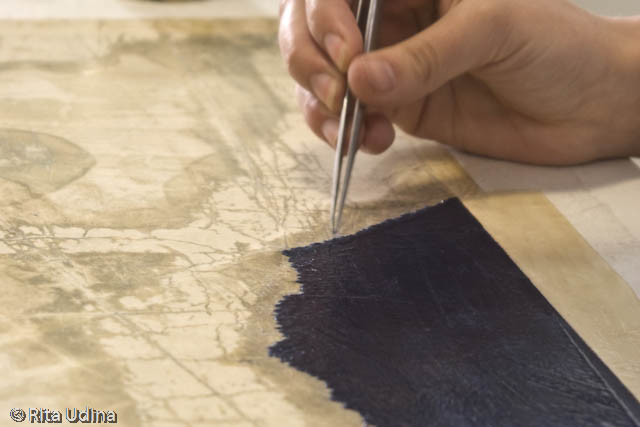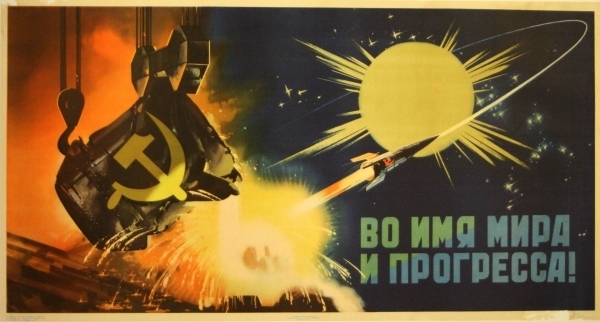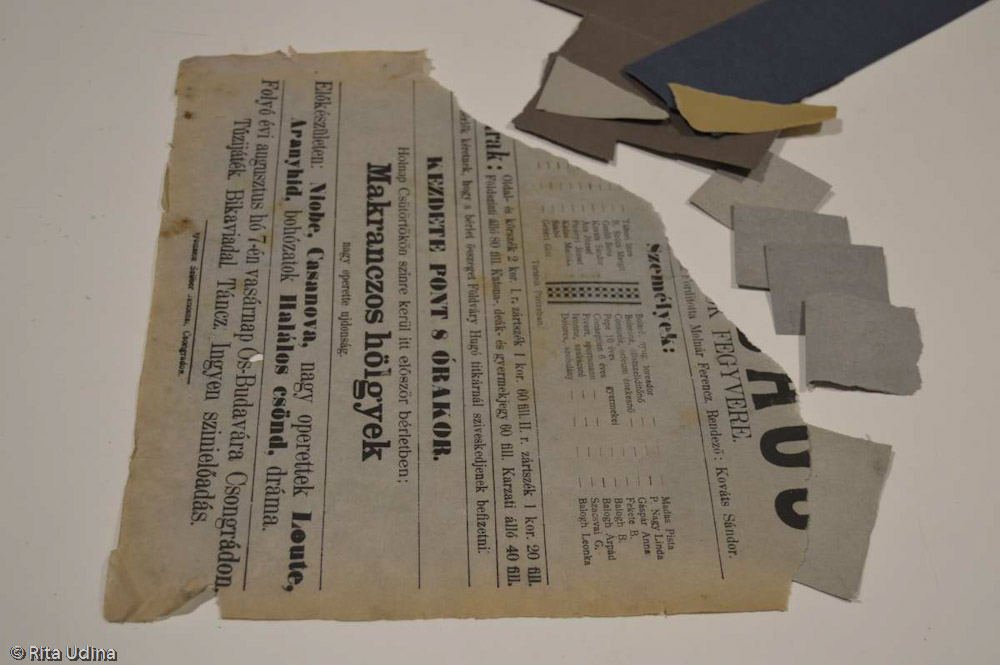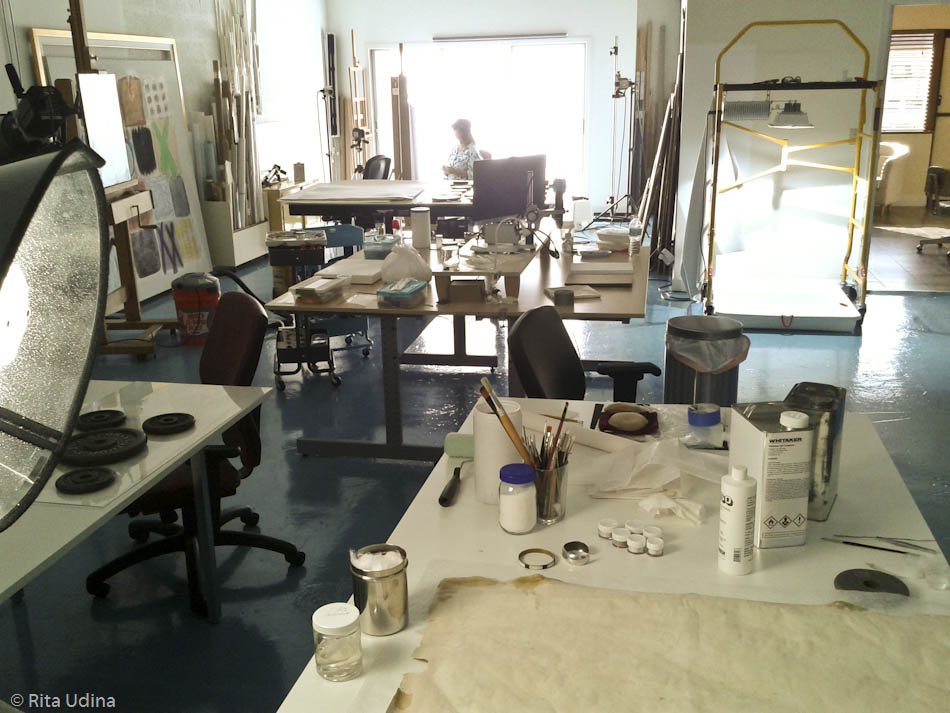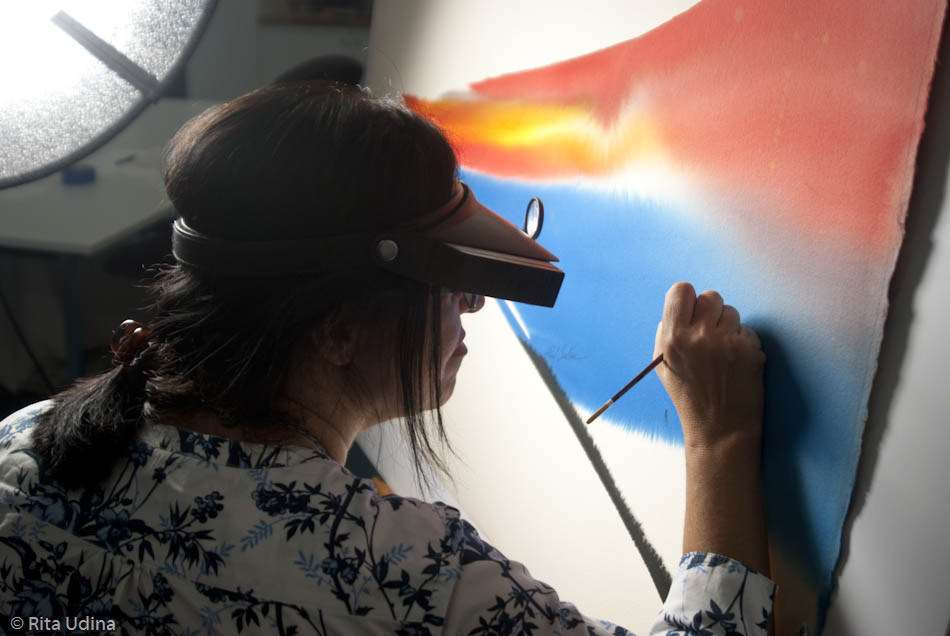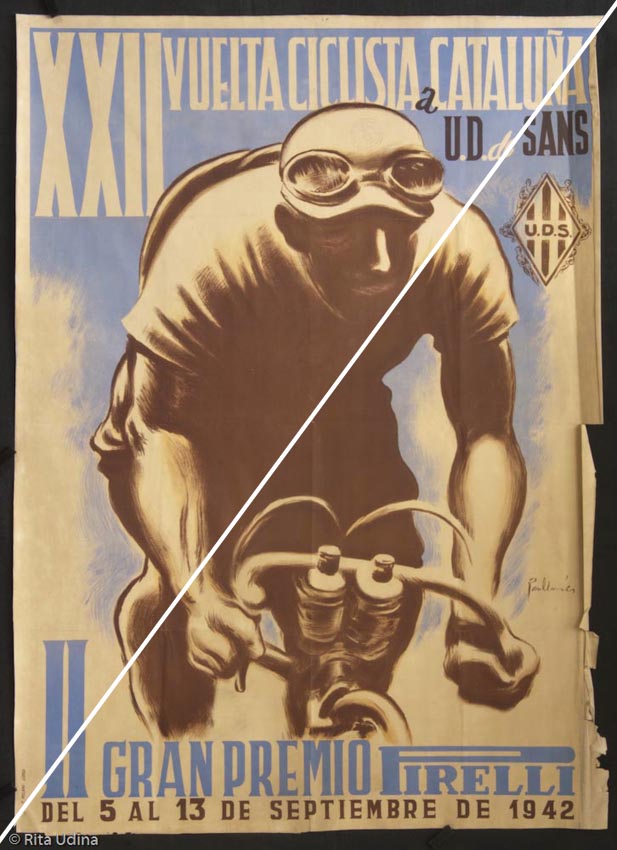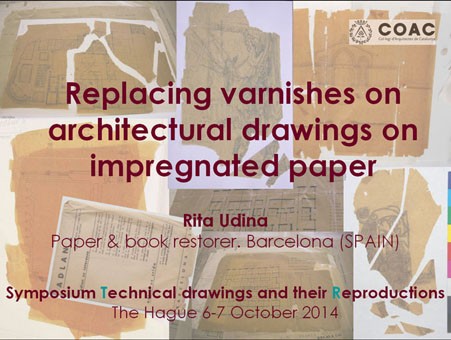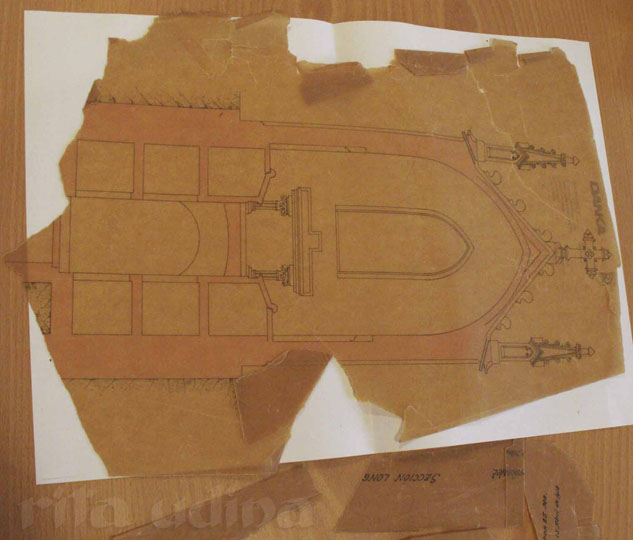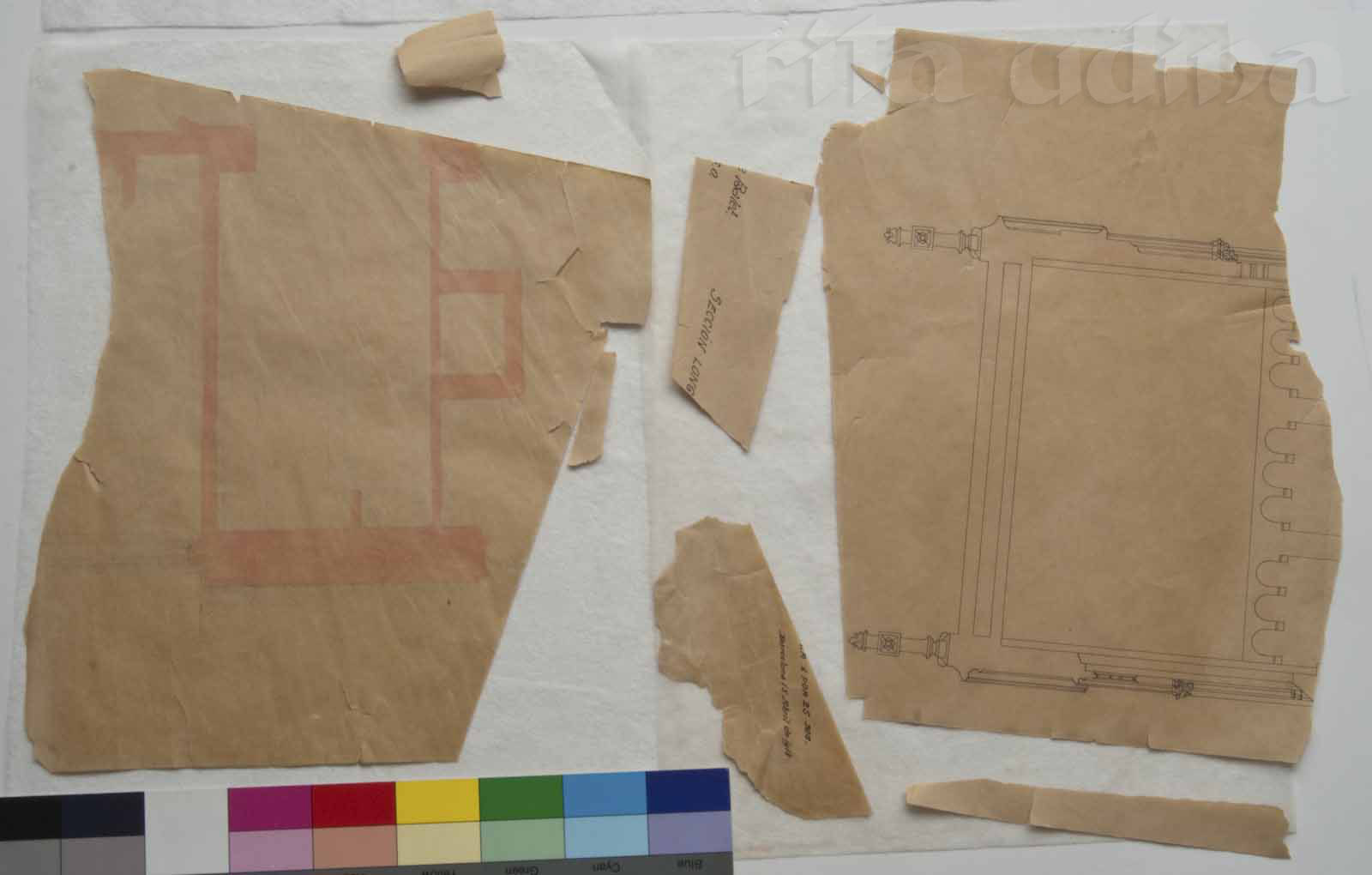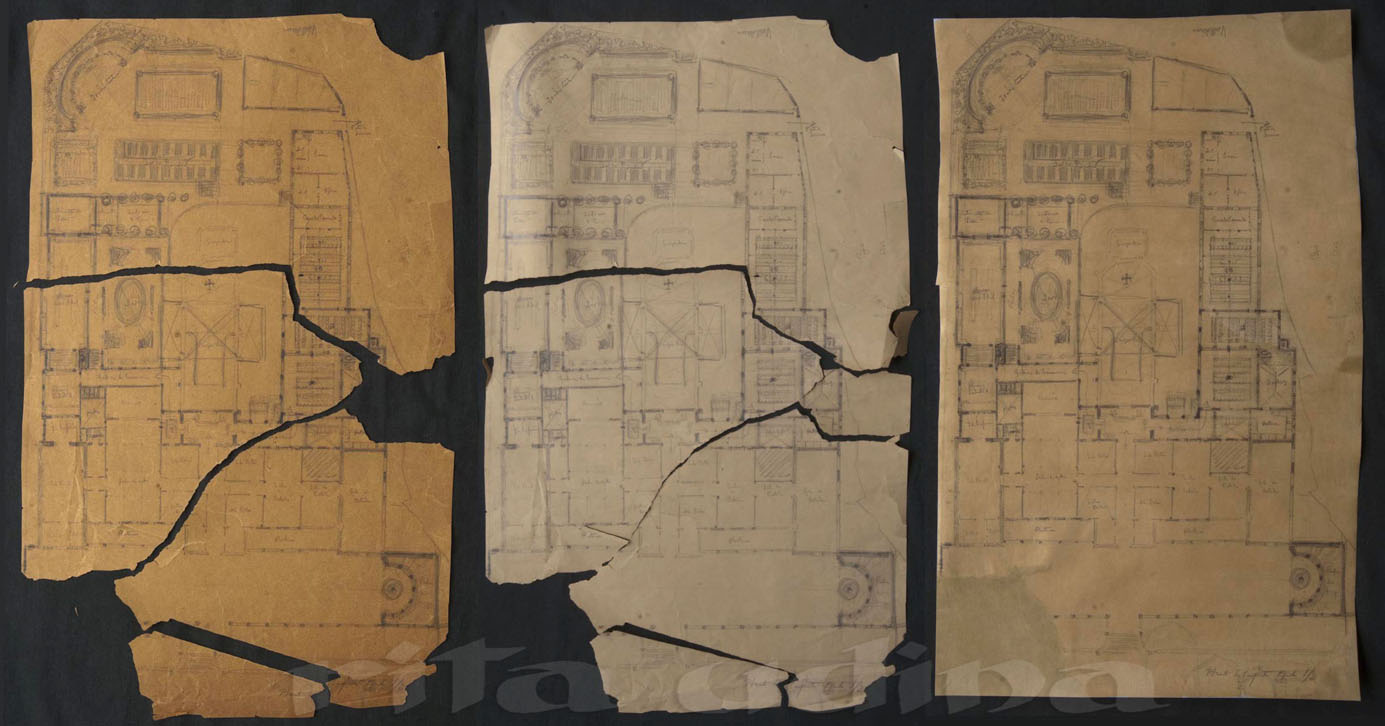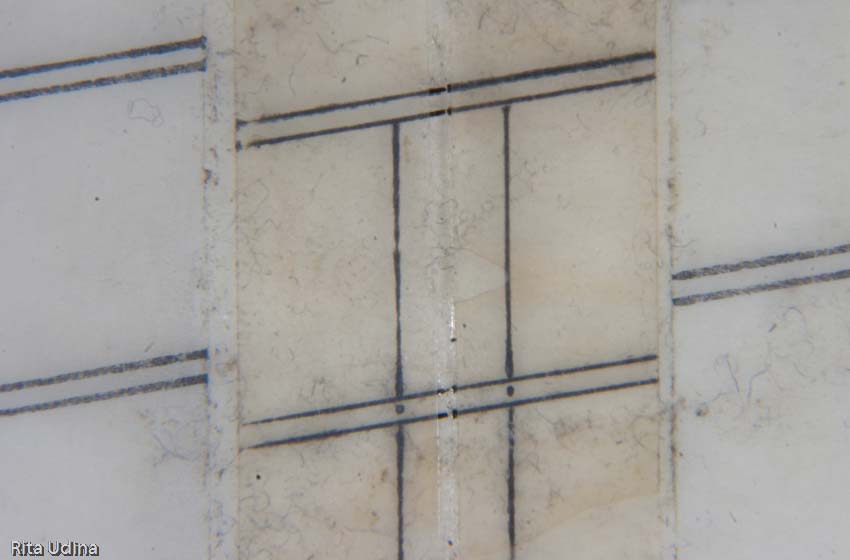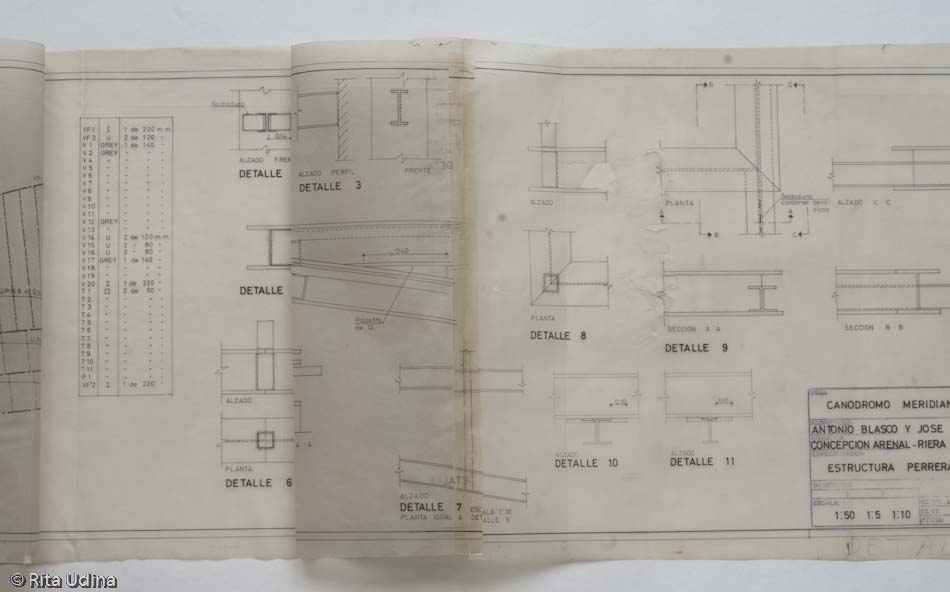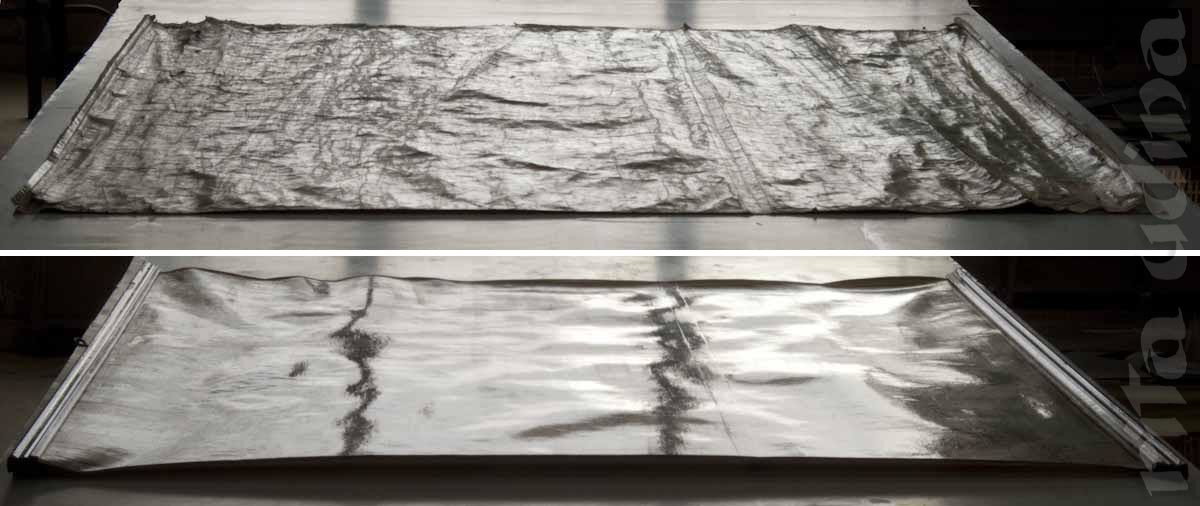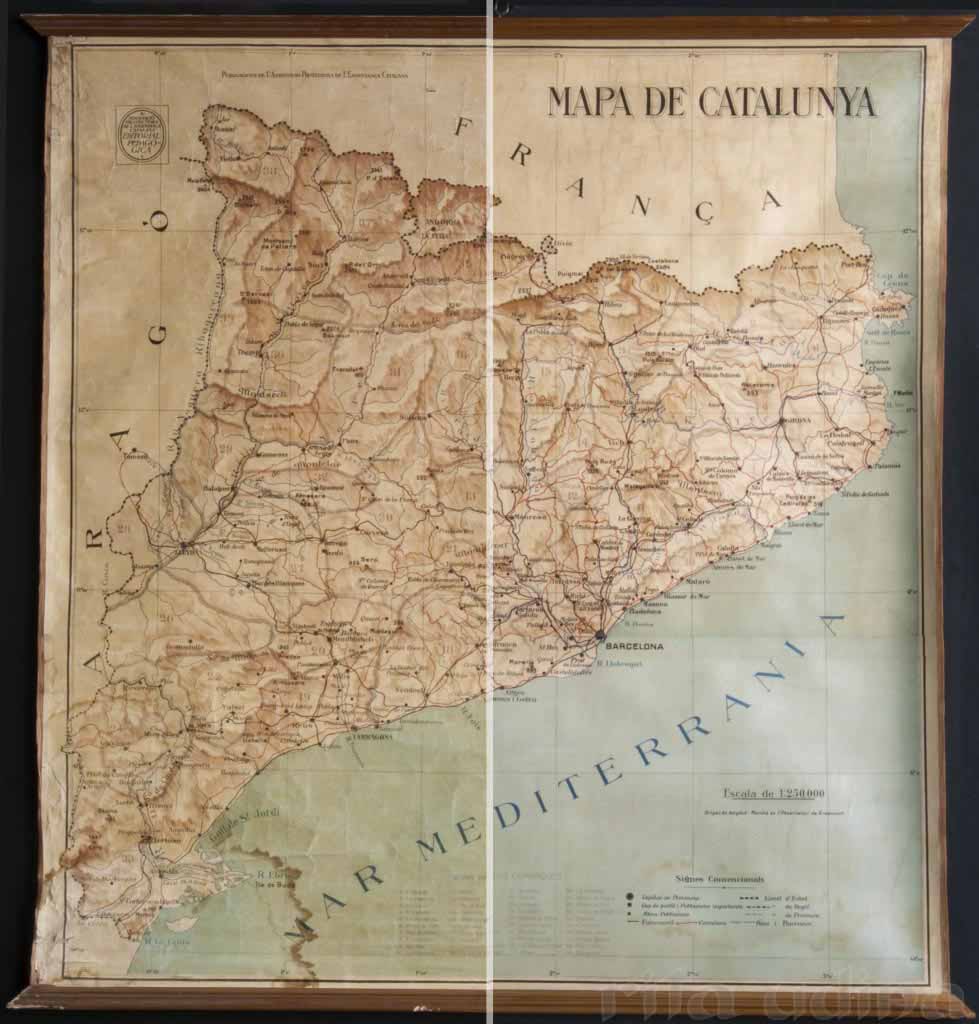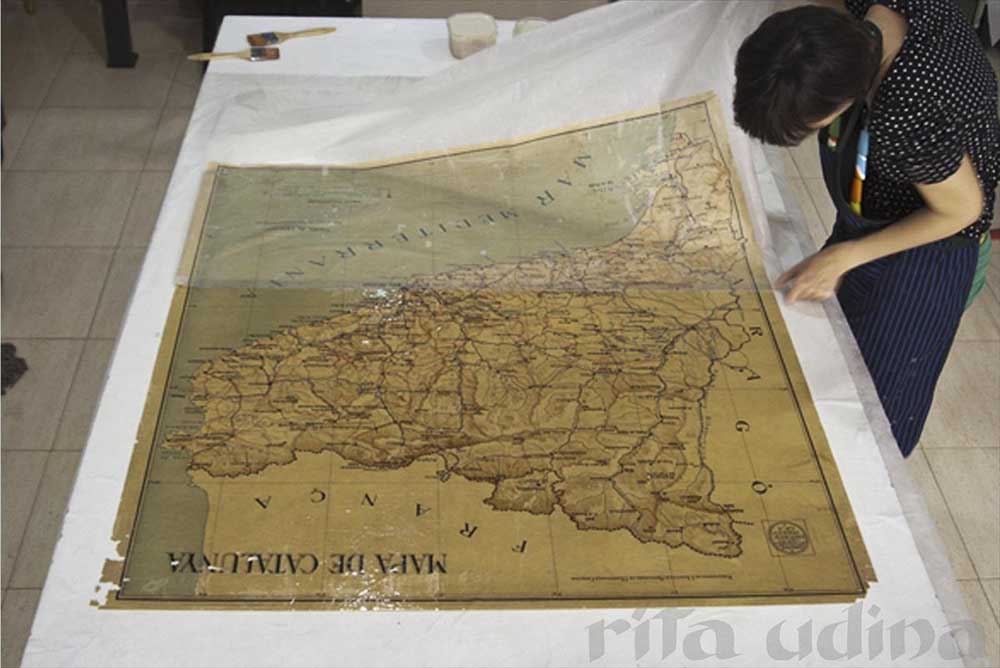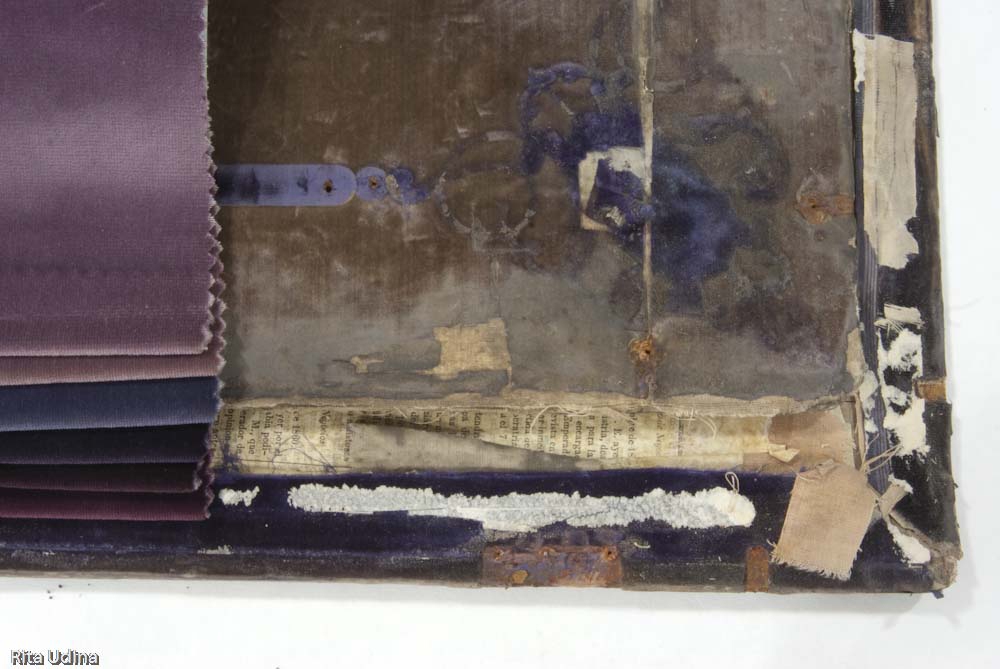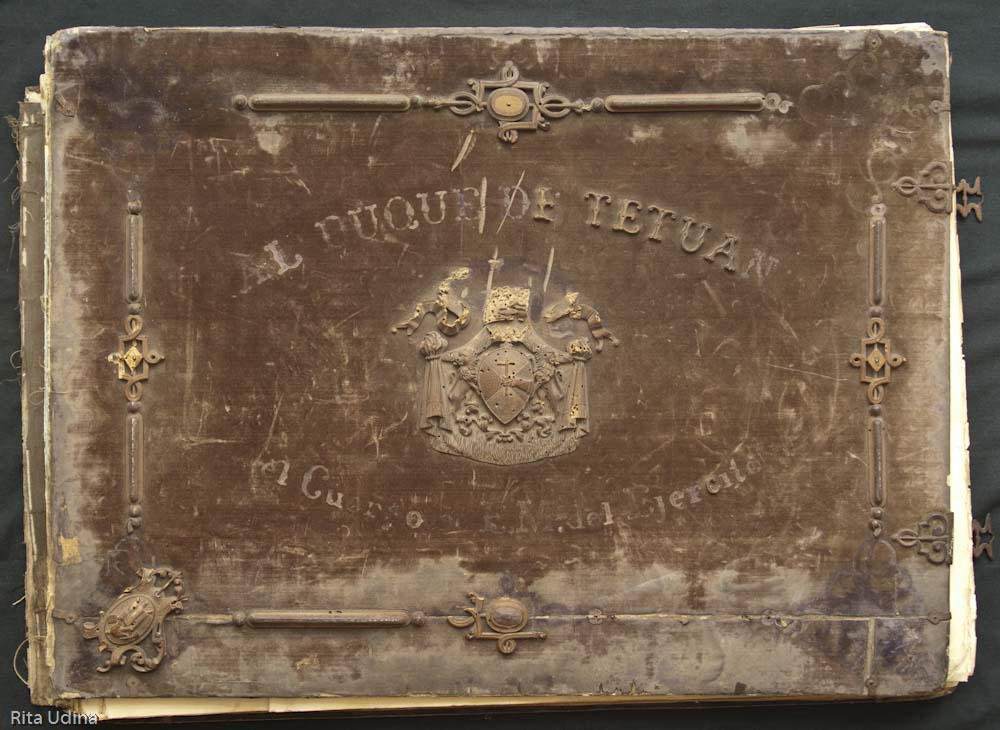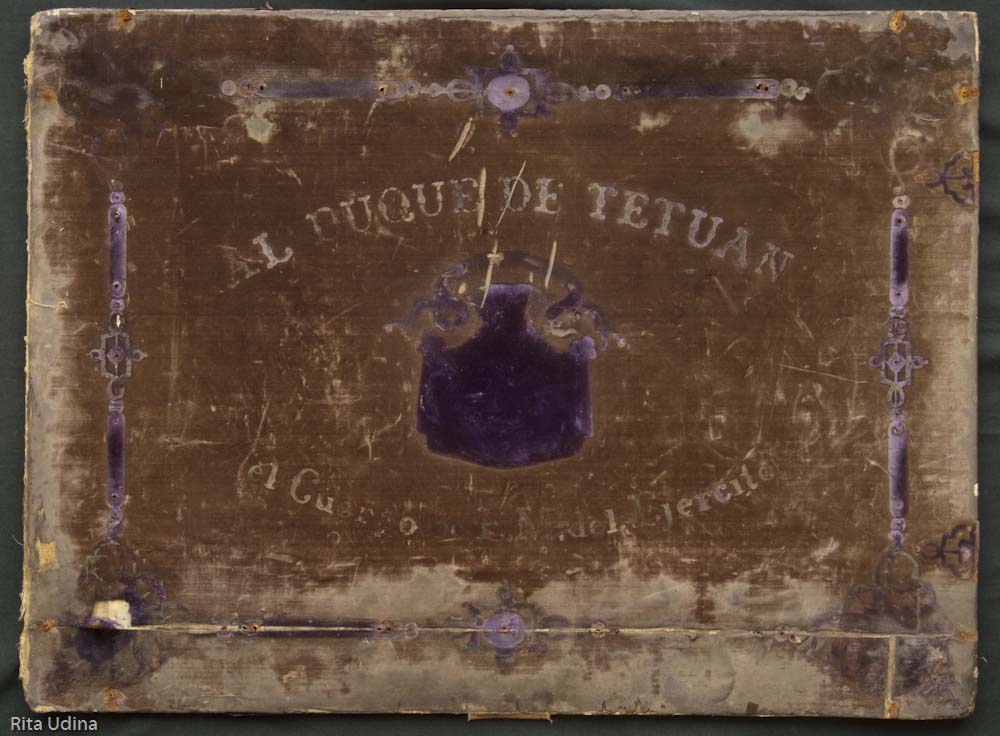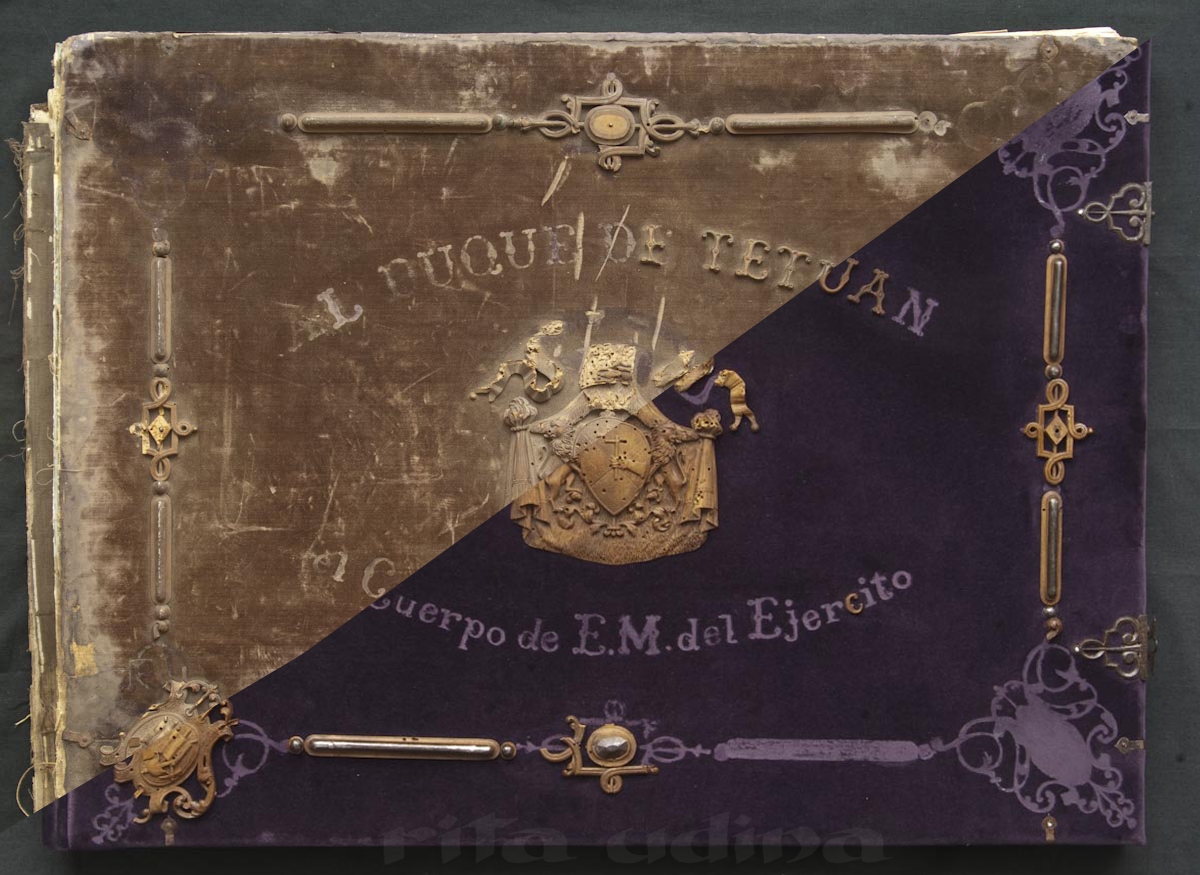retoc (reintegració cromàtica)
A continuació les entrades de blog relacionades amb retoc (reintegració cromàtica):
Estrena del vídeo del procés de restauració d’un mapa
Primícia del vídeo on es mostra el procés complet de restauració d'un mapa de gran format pintat a mà, entelat i envernissat. No t'ho perdis! El proper dimarts 27 a les 16:00h.
De professió, restauradora de llibres i documents
Què fa un restaurador de paper i llibres? Per a qui treballa? Quines coneixements i habilitats ha de tenir? La conservació i restauració, una disciplina vinculada a la ciència, història i arts i oficis. Parlem d'allò que ens distingeix dels falsificadors i de com ens fabriquem una taula de succió per a restaurar documents, amb grans dosis de creativitat i enginy, qualitats indispensables per a un restaurador.
El retoc: un tabú en la restauració de paper?
El retoc és del més controvertit que trobarem en restauració, perquè implica establir quin aspecte volem que tingui l'objecte restaurat. Al meu parer l'aparença d'un objecte històric és quasi tan important com la seva estabilitat físico-química, i la no-intervenció pot donar lloc a resultats poc agradosos que distorsionin més la llegibilitat i coherència de la obra que un objecte ben retocat. Per molt que ens entestem en fer-ho el més neutre possible, el menys arbitrari, hem d'admetre que un bon retoc demana bon gust.
- La diplomàtica tinta neutra GaleriaPROJECTE, o llegir l'ENTRADA.">во имя мира и пгogreссa!, ("En nom de la pau i el progrés!", Valentin Viktorov). Col·lecció privada. Imatge facilitada per un seguidor del blog, d'un exemplar complet del mateix cartell (ens arriba mesos després d'haver-lo restaurat! :-s). Tot i que, l'avantatge de la cauta tinta neutra és que ara som a temps de reproduir l'original sense massa complicacions, si el client així ho desitja.">
La diplomàtica tinta neutra
Què és la tinta neutra? Una tinta de pH=7? Una tinta transparent? Amb la diplomàtica tinta neutra, enceto una sèrie d'entrades que miraran d'explicar l'eterna pregunta: "Què passa quan falta un tros? La controvèrsia està assegurada fem el què fem (fins i tot quan no fem res), i els restauradors tenim garantit que la decisió no agradarà a tothom, doncs els criteris són canviants i subjectius.
Curs de reintegració i retoc en restauració de paper (1a edició)
Iguales el color però no la textura? ¿L'acabat et dóna guerra? ¿La tinció t'exaspera? Amb aquest curs aconseguiràs retocar i reintegrar amb més seguretat i èxit.
- Dürer: De la vella Europa a Palm Beach GaleriaHoly Trinity. Woodcut by Dürer, 1511
Santísima Trinidad. Xilografía de Durero, 1511" data-title="Santíssima Trinitat. Xilografia de Dürer, 1511
Holy Trinity. Woodcut by Dürer, 1511
Santísima Trinidad. Xilografía de Durero, 1511" data-caption="">South Florida Art Conservation workshop
Taller de restauración SFLAC" data-title="Taller de restauració SFLAC
South Florida Art Conservation workshop
Taller de restauración SFLAC" data-caption="">Conservator Amparo Escolano at SFLAC workshop
La restauradora Amparo Escolano en SFLAC" data-title="La restauradora Amparo Escolano a SFLAC
Conservator Amparo Escolano at SFLAC workshop
La restauradora Amparo Escolano en SFLAC" data-caption="">Conservator Jerónimo Pérez Roca
El restaurador Jerónimo Pérez Roca" data-title="El restaurador Jerónimo Pérez Roca
Conservator Jerónimo Pérez Roca
El restaurador Jerónimo Pérez Roca" data-caption="">
Dürer: De la vella Europa a Palm Beach
Cocodrils, palmeres, residències de luxe… [...]
Els ciclistes de Sants ja no estan de pega
Els ciclistes de Sants van arribar al taller garranyigant, més que no pas pedalant! Estrips, fòxing, enfosquiment, fragilitat, acidesa... Tots aquests danys han estat curosament tractats perque puguin fer meta esplendorosos a l'arxiu de Sants-Montjuïc, on estan exposats. Perquè, qui diu que en apropar-se a la vuitantena no es pot fer goig o anar en bicicleta? Fixeu-vos sinó amb en Ricardo, el ciclista... qui l'ha vist, i qui el veu: dóna una catalana volta, i les que faci falta, a cartells molt més joves!
Nova metodologia de restauració per retornar la flexibilitat al paper vegetal
Nova metodologia per retornar la flexibilitat perduda a papers vegetals impregnat amb fragilitat severa. Els papers vegetals -tan utilitzats en dibuixos tècnics- tenen en comú que són transparents, però hi ha diferències significatives en el seu procés d'elaboració. Les seves propietats i comportament, seran doncs molt diversos. En el paper impregnat s'aplicava un oli o vernís per fer-lo transparent. Explicació la restauració de diversos dibuixos en els que el vernís fou retirat per a substituir-lo posteriorment, i de com això permet que el paper es pugui manipular de forma segura sense perdre per això les propietats visuals que el caracteritzen.
- Maleïts “celos”! GaleriaCelo després de restaurar la tira (netejant-la i reemplaçant l'adhesiu greixós)" data-title="Celo després de restaurar la tira (netejant-la i reemplaçant l'adhesiu greixós)" data-caption="Plànol en paper vegetal després de restaurar el celo, del que se n'ha reemplaçat l'adhesiu, però no la tira plàstica">
Maleïts “celos”!
Quins són els perjudicis del celo? Es pot alliberar el patrimoni documental d'aquestes tires greixoses? Explicació dels mecanismes de degradació d'aquesta històrica cinta "reparadora" que trobem en documents de tota mena, i de les possibilitats de restauració en cada cas.
- Restauració d’un cartell escolar del període de la guerra civil GaleriaConservation of lined and varnished poster
Restauraciónd e cartel entelado y barnizado" data-title="Restauració de cartell entelat i envernissat
Conservation of lined and varnished poster
Restauraciónd e cartel entelado y barnizado" data-caption="Restauració d’un cartell escolar del període de la guerra civil">
Restauració d’un cartell escolar del període de la guerra civil
Aquest mapa de Catalunya representa els típics cartells escolars: amb els seus llistons per penjar i enrotllar, i entelat pel revers. Els vernissaven amb goma laca per protegir-los de l'abrasió i fer-los més impermeables. Estava fet sobre dos papers impresos, encolats per una franja horitzontal central. És de 1936, tot just esclatava la guerra civil espanyola. Infinitat de microfissures erosionaven la superfície originalment llisa del paper imprès. La imatge de dalt, a llum rasant, mostra com l'eliminació del vernís original ha permès hidratar de nou el paper, retornant-li l'elasticitat.
- Allò que el vent s’endugué GaleriaFront cover before restoration
Cubierta anterior antes de restaurar" data-title="Coberta anterior abans de restaurar
Front cover before restoration
Cubierta anterior antes de restaurar" data-caption="Coberta anterior abans de restaurar / Front cover before restoration / Cubierta anterior antes de restaurar">
Allò que el vent s’endugué
No m'agrada molt tenir llibres sobre la guerra, però he de reconèixer que aquest és especialment bonic. Que l'enquadernació sigui en vellut em va semblar tot un repte de cara a la seva restauració, que per la restano ha tingut majors complicacions. Exposo la restauració d'aquest llibre pels maldecaps que m'ha donat quant a la resolució de les parts perdudes, les incrustacions en fusta. El laboriós treball de talla i el fet que la pèrdua fos considerable, sumat a que mancava un original del que copiar en bona part de les peces absents (els quatre escuts de les cantonades eren diferents) complicava bastant l'assumpte.
El valor de les coses
La reintegració és probablement el més controvertit d’una restauració, perque demana l’establiment d’un criteri per tractar l’absència, i això implica posicionar-se en aspectes gens banals: Quin és el valor o significat de l’objecte, quan únic és i quina és la seva funció (o la de la part afectada) i a partir d’aquí, i tenint en compte el seu estat de conservació, els restauradors mirem de trobar el criteri més adient a l’hora d’intervenir.
Categories
DANYS
acidesa / oxidació
arrugues
bibliòfag
insectes
corc
lepisma
mamífers
rata
microorganismes
fongs
bibliòpata / grafòpata
celo (esparadrap, BluTack...)
desastre
inundació
estructural
fòxing
llacuna
mirall de plata
EINES, MÀQUINES
OBJECTE
cartell
dibuix
document
segell
segell lacrat
fons d'arxiu o biblioteca
fotografia
albúmina
daguerreotip
gelatino-argèntica
placa de vidre
llibre
capçada
enquadernació flexible
estructures dels llibres
lligall
llom articulat (o buit)
llom fix (o ple)
relligat
tanques
manuscrit
mapes, plànols, dibuixos tècnics
mapes
plànols
PRODUCTES
adhesius - fixatius - vernissos
adhesius naturals
cautxú (natural)
engrut (midó)
goma laca
adhesius sintètics
cautxú (sintètic)
Filmoplast®
Klucel ®
Paraloid® B72
Tylose® (MHC)
dissolvent
alcohol benzílic
carbonat de dietil
ciclometicona
dimetilsulfòxid (DMSO)
polietilenglicol (PEG )
gels
gel d'agarosa
gel de xantana
gel físic
gel quimic
hidro-gels
organo-gels
Velvesil Plus
nanopartícules
tensioactiu
SUPORT
fusta
metall
paper
paper couché
paper de draps
paper de pasta mecànica
paper Kraft
paper vegetal
paper ceba
paper impregnat
paper verjurat
washi - papers japonesos
pell
pergamí
plàstics
Acetat de cel·lulosa
polietilè terftalat (PET)
Polipropliè (PP)
tela
cotó
seda
vellut
vidre
TÈCNICA
aquarel·la
bolígraf
collage
foto-reproducció
diazotip
gouache, tremp
imprès
gravat
aiguafort
litografia
xilografia
llapis de grafit
retolador
segell de tampó
tinta
TEORIA conservació-restauració
TRACTAMENTS
aplanat
aplanat per tensió
blanqueig
blanqueig solar
conservació preventiva
clima (HR, temp.)
consolidació
aprestat
empeltat
entelat
fixat de tintes
laminació
reintegració (material)
polpa de paper
desacidificació
desinfecció
digitalització
enquadernació nova
ensobrat - encapsulat
camises de conservació
capsa
sobres quatre solapes
envernissat
neteja
neteja en sec
neteja humida
treure celos
treure taques
treure vernís
retoc (reintegració cromàtica)
retoc en tinta neutra
retoc mimètic (o il·lusionista)

